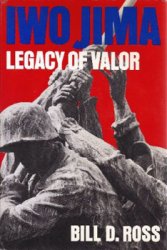Although much of the Iranians’ anger was directed
against the United States during the early phases of the
revolution, Iran had equally hated enemies closer to
home. To the north, the immense power of the Soviet
Union, driven by atheistic communism, was viewed as a
modern-day version of the Russian threat of previous
centuries. To the west was a militant and hostile Iraq,
now under the leadership of the ambitious Saddam Hussein
(b. 1937). Problems from both directions appeared
shortly after Khomeini’s rise to power. Soviet military
forces occupied Afghanistan to prop up a weak Marxist
regime there. The following year, Iraqi forces suddenly attacked
along the Iranian border.
Iraq and Iran had long had an uneasy relationship, fueled
by religious differences (Iranian Islam is predominantly
Shi’ite, while the ruling caste in Iraq is Sunni) and
a perennial dispute over borderlands adjacent to the Persian
Gulf, the vital waterway for the export of oil from
both countries. Like several of its neighbors, Iraq had long
dreamed of unifying the Arabs but had been hindered by
internal factions and suspicion among its neighbors.
During the mid-1970s, Iran gave some support to a
Kurdish rebellion in the mountains of Iraq. In 1975, the
government of the shah agreed to stop aiding the rebels
in return for territorial concessions at the head of the gulf.
Five years later, however, the Kurdish revolt had been
suppressed, and President Saddam Hussein, who had assumed
power in Baghdad in 1979, accused Iran of violating
the territorial agreement and launched an attack on
his neighbor. The war was a bloody one, involving the
use of poison gas against civilians and the employment of
children to clear minefields, and lasted for nearly ten
years. Other countries, including the two superpowers,
watched nervously in case the conflict should spread
throughout the region. Finally, with both sides virtually
exhausted, a cease-fire was arranged in the fall of 1988.
The bitter conflict with Iran had not slaked Saddam
Hussein’s appetite for territorial expansion. In early Au-
gust 1990, Iraqi military forces suddenly
moved across the border and
occupied the small neighboring
country of Kuwait at the head of the
gulf. The immediate pretext was the
claim that Kuwait was pumping oil
from fields inside Iraqi territory.
Baghdad was also angry over the
Kuwaiti government’s demand for
repayment of loans it had made to
Iraq during the war with Iran. But
the underlying reason was Iraq’s
contention that Kuwait was legally a
part of Iraq. Kuwait had been part of
the Ottoman Empire until the opening
of the twentieth century, when
the local prince had agreed to place
his patrimony under British protection.
When Iraq became independent in 1932, it claimed
the area on the grounds that the state of Kuwait had been
created by British imperialism, but opposition from major
Western powers and other countries in the region, who
feared the consequences of a “greater Iraq,” prevented an
Iraqi takeover.
The Iraqi invasion of Kuwait in 1990 sparked an international
outcry, and the United States amassed an
international force that liberated the country and destroyed
a substantial part of Iraq’s armed forces. President
George H. W. Bush had promised the American people
that U.S. troops would not fight with one hand tied behind
their backs (a clear reference to the Vietnam War),
but the allied forces did not occupy Baghdad at the end of
the war because the allies feared that doing so would
cause a total breakup of the country, an eventuality that
would operate to the benefit of Iran. The allies hoped instead
that the Hussein regime would be ousted by an internal
revolt. In the meantime, harsh economic sanctions
were imposed on the Iraqi government as the condition
for peace. The anticipated overthrow of Saddam Hussein
did not materialize, however, and his tireless efforts to
evade the conditions of the cease-fire continued to bedevil
the administrations of Presidents Bill Clinton and
George W. Bush.
The terrorist attacks launched against the United
States in September 2001 added a new dimension to the
Middle Eastern equation. After the failure of the Soviet
Union to quell the rebellion in Afghanistan during
the 1980s, a fundamentalist Muslim group known as the
Taliban seized power in Kabul and ruled the country with
a fanaticism reminiscent of the Cultural Revolution in
China. Backed by conservative religious forces in Pakistan,
the Taliban provided a base of operations for
Osama bin Laden’s terrorist network.
After the attacks of September
11, a coalition of forces led by
the United States overthrew the
Taliban and attempted to build a
new and moderate government. But
the country’s long history of bitter
internecine tribal warfare represents
a severe challenge to such efforts.
In the meantime, the Bush administration,
charging that Iraqi
dictator Saddam Hussein not only
had provided support to bin Laden’s
terrorist organization but also sought
to develop weapons of mass destruction,
threatened to invade Iraq and
remove him from power. The plan,
widely debated in the media and opposed
by many of the United States’ traditional allies, disquieted
Arab leaders and fanned anti-American sentiment
throughout the Muslim world. Nevertheless, in
March 2003, American-led forces attacked Iraq and overthrew
Hussein’s regime. In the months that followed, occupation
forces sought to restore stability to the country
while setting forth plans to lay the foundations of a future
democratic society. But although Saddam Hussein was
later captured by U.S. troops, armed resistance by militant
Muslim elements continues to hinder a return to
stability.




 World History
World History









